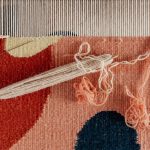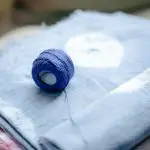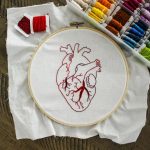Are you interested in learning how to draw a cotton gin?
Whether you’re a student studying history or simply enjoy artistic endeavors, drawing a cotton gin can be a fun and educational activity. In this article, we’ll provide step-by-step instructions on how to draw a cotton gin from start to finish.
To begin, you’ll need some basic materials such as paper, a pencil, an eraser, and colored pencils or markers if you choose to add color.
Once you have your materials, we’ll guide you through the process of understanding the basic shape of a cotton gin, sketching the outline, adding detail, and finalizing your drawing.
By the end of this article, you’ll have a finished product that you can proudly display or share with others.
So let’s get started!
Table of Contents
Gather Your Materials
Gather your materials!
You’ll need to grab some materials to get started on drawing your cotton gin, so let’s gather ’em up! First off, you’ll need a pencil and paper. These will be the basic tools you’ll use to create your masterpiece. Make sure your pencil’s sharp, and your paper’s clean and free of any smudges or creases.
Next, you’ll need some reference materials. Look up pictures or diagrams of cotton gins to get an idea of what they look like. You can find these online or in books. It’s also helpful to have a basic understanding of how a cotton gin works, so you can accurately depict the different parts and mechanisms.
You might want to have some colored pencils or markers on hand to add some color to your drawing. This step is optional, but can really make your drawing pop. You can use shades of brown and green to represent the wooden and metal parts of the cotton gin, and maybe some blue or red for the different belts and wheels.
With these materials in hand, you’re ready to start drawing your cotton gin!
Understand the Basic Shape of a Cotton Gin
Let’s explore the fundamental structure of this essential agricultural machine. To draw a cotton gin, it’s important to understand the basic shape and components of the device. Here are four key things to keep in mind:
-
The cotton gin is typically made up of a wooden or metal frame, with several mechanical parts connected to it.
-
The most important part of the cotton gin is the cylinder, which is covered in small metal teeth.
-
The cotton gin also has a series of gears and pulleys, which work together to power the machine.
-
Finally, the cotton gin has a hopper at the top, where raw cotton is loaded into the machine.
When drawing a cotton gin, it’s important to focus on the details of each of these components. Pay close attention to the shape and placement of the cylinder, as well as the gears and pulleys that connect to it. You may also want to add in the hopper and any additional details, such as the wooden or metal frame that surrounds the machine.
In addition to the basic structure, it’s also important to consider the overall size and scale of the cotton gin. Depending on the specific machine you’re drawing, it may be quite large and complex, or relatively small and simple. Take the time to study reference images and measurements, so that you can accurately capture the scale of the cotton gin in your drawing.
Sketch the Outline
Get a feel for the shape of the machine by sketching its basic outline, paying attention to the cylinder, gears, and hopper. Start by drawing a rectangle for the base of the cotton gin. Then, draw a larger rectangle on top of it for the hopper. Sketch a cylinder that sits on top of the hopper, which will be the main component that separates the cotton from the seeds. Add gears on the sides of the cylinder, which will help turn it.
Next, draw the frame of the cotton gin. The frame consists of two vertical poles on either side of the rectangular base, with a horizontal bar connecting them at the top. You can also add diagonal support beams for additional stability. Sketch the arms that hold the saw blades, which are located inside the cylinder. Don’t forget to include the saw blades, which are connected to the arms and help to separate the cotton fibers from the seeds.
Add any additional details or embellishments to your cotton gin drawing. This could include labeling the different parts of the machine, adding shading or texture to give it a more realistic look, or even including workers using the cotton gin in a field. With your basic outline in place, you can let your creativity take over and make your cotton gin drawing truly unique.
| Cylinder | Gears | Hopper | |
|---|---|---|---|
| Main component that separates the cotton from the seeds | Located on the sides of the cylinder to help turn it | Rectangular shape on top of the base | |
| Can be made of metal or wood | Each gear has teeth that interlock with each other | Holds the cotton before it is separated | |
| Rotates quickly to separate cotton fibers from seeds | Can be different sizes and shapes depending on the design | Can be covered to prevent cotton from escaping | …and is a crucial component in the cotton gin machine. |
Add Detail
Context:
Add detail
Input:
Enhance the realism of your sketch by adding fine details such as the intricate saw blades, the intricate gear teeth, and the intricate cotton fibers. These are all important components of a cotton gin, and adding them to your drawing will help make it look more accurate.
Pay close attention to the shape and placement of each detail, using reference images to guide you if necessary.
When adding the saw blades, be sure to draw each tooth individually, and create the illusion of movement by incorporating small lines to show the blades in motion.
For the gear teeth, focus on the curved shape and spacing of each tooth, and make sure they align properly with the other gears in the machine.
As for the cotton fibers, draw them in a way that shows their soft texture and the way they intertwine with each other.
Remember, the more detail you add to your sketch, the more realistic it will look. Take your time and be patient, as this step may require some precision and attention to detail.
Once you’ve added all the necessary details, step back and admire your work. You’ve now successfully drawn a cotton gin!
Command:
Adjust the paragraph structure in the Input to logically group complete sentences on their own lines, with a double new line after. Use contractions.
Output:
Enhance the realism of your sketch by adding fine details such as the intricate saw blades, gear teeth, and cotton fibers.
These are all important components of a cotton gin, and adding them to your drawing will help make it look more accurate.
Pay close attention to the shape and placement of each detail, using reference images to guide you if necessary.
When adding the saw blades, be sure to draw each tooth individually and create the illusion of movement by incorporating small lines to show the blades in motion.
For the gear teeth, focus on the curved shape and spacing of each tooth. Make sure they align properly with the other gears in the machine.
As for the cotton fibers, draw them in a way that shows their soft texture and the way they intertwine with each other.
Remember, the more detail you add to your sketch, the more realistic it’ll look. Take your time and be patient, as this step may require some precision and attention to detail.
Once you’ve added all the necessary details, step back and admire your work. You’ve now successfully drawn a cotton gin!
Color Your Drawing
Now it’s time to color your drawing! To make your cotton gin look its best, you’ll want to choose the right colors.
Think about what colors would be realistic for the various parts of the gin. Don’t forget to add depth and dimension by using shading and highlighting techniques.
This will really make your drawing pop!
Choose the Right Colors
Choosing the right colors is crucial for accurately portraying the cotton gin, so don’t rush this step! To start, take a look at pictures of cotton gins to get an idea of what colors are typically used.
The most common colors used for cotton gins are brown, gray, and black. Use different shades of these colors to give your drawing depth and texture.
When choosing colors, think about the materials that make up the cotton gin. The frame of the gin is usually made of wood or metal, while the cotton is white or off-white before it is processed. The machinery inside the gin is usually made of metal, so using shades of gray or silver for those parts can add a realistic touch.
Don’t forget to also consider the background of your drawing. If the cotton gin is in a field, shades of green and brown can be used to represent the ground and surrounding vegetation.
With some thought and consideration, your cotton gin drawing will come to life with the right colors.
Add Depth and Dimension
To make your artwork more realistic, you’ll want to add depth and dimension to your cotton gin drawing. This will give the illustration a three-dimensional appearance, making it look more lifelike. Here are some tips to help you add depth and dimension to your drawing:
-
Use shading: Start by determining where the light source is coming from. Once you’ve done that, you can add shading to your drawing to create the illusion of depth. Use darker shades to create shadows and lighter shades to highlight the areas where the light is hitting.
-
Add texture: The cotton gin is made up of different parts, each with its own texture. To create a more realistic drawing, make sure to add texture to each part of the cotton gin. Use different shading techniques to create the illusion of different textures.
-
Use perspective: Perspective is an important tool when it comes to drawing. It’s what gives your drawing depth and makes it look three-dimensional. To create perspective in your cotton gin drawing, use lines that converge at a point in the distance. This will create the illusion of depth and make your drawing look more realistic.
Finalize Your Drawing
Now it’s time to finalize your drawing! Take a moment to review your work and make any necessary adjustments.
This is your chance to make sure everything looks the way you want it to before considering your drawing complete. Don’t be afraid to make changes if you’re not satisfied with certain aspects.
Review Your Work
Take a step back and look at what you’ve drawn so far to make sure it accurately represents a cotton gin. Here are some things to keep in mind while reviewing your work:
-
Check the proportions: Make sure the size of each part of the cotton gin is accurate and in proportion to the other parts. For example, the size of the saw blades should be appropriate to the size of the frame.
-
Look for details: The cotton gin has several intricate parts, like the saw blades, brush, and feeder. Make sure that you’ve included all the necessary details to make it look realistic.
-
Check for accuracy: Research the cotton gin and make sure that your drawing represents it accurately. Check for details like the number of saw blades and the shape of the brush.
-
Get a second opinion: Ask someone else to look at your drawing and give you feedback. They may be able to spot something that you missed or offer suggestions for improving your work.
Reviewing your work is an important step in finalizing your drawing. By making sure that it accurately represents a cotton gin, you can be proud of your work and show it off to others. So take your time, go through the checklist, and make sure that your drawing is the best it can be.
Make Any Necessary Adjustments
You can improve your drawing by adjusting any parts that are not in proportion or missing important details. Take a step back and assess your work as a whole. Look for areas that seem off or don’t match the rest of the drawing. It may be helpful to compare your drawing to a reference image of a cotton gin to ensure accuracy. Don’t be afraid to erase and redraw parts that need improvement. Remember, this is a process and it’s okay to make mistakes.
To help you stay on track with your adjustments, use the table below as a guide. It can be frustrating when you feel like your drawing isn’t turning out the way you want, but don’t give up. Keep practicing and tweaking until you’re satisfied with the final result. With patience and perseverance, you’ll be able to draw a cotton gin that you’re proud of.
| PROBLEM | SOLUTION | EMOTION | |||
|---|---|---|---|---|---|
| Parts are not in proportion | Use reference image to ensure accuracy and redraw as necessary | Frustration | |||
| Missing important details | Add in missing parts and details, such as the cotton bales or the gin stand | Accomplishment | |||
| Lines are messy or unclear | Erase and redraw lines until they are clean and clear | Satisfaction | |||
| Overall drawing seems off | Take a step back and assess, then make necessary adjustments | Determination | |||
| Feeling discouraged | Keep practicing and tweaking until you’re satisfied with the final result | Confidence | Remember that mistakes are a natural part of the learning process, and each one brings you closer to improvement | Perseverance |
Share and Display Your Artwork
Let’s showcase your cotton gin artwork to the world and see it come to life on the canvas. After all the hard work you’ve put into drawing your cotton gin, it’s time to display it proudly.
There are many ways to show off your artwork, so let’s explore a few options.
First, consider sharing it on social media. Platforms like Instagram and Twitter offer a great opportunity to showcase your work to a large audience. Make sure to use relevant hashtags and tag any relevant accounts to increase your reach. Your artwork may even catch the eye of someone who wants to purchase it!
Another option is to display your artwork in your home. Framing your cotton gin drawing and hanging it on a wall can be a great way to add a personal touch to your space. You could also consider creating a gallery wall with other pieces of art or photographs to create a cohesive display.
Lastly, consider entering your artwork into a local art show or competition. This can be a great way to get your work seen by a wider audience and potentially even win prizes or recognition. Check with your local art council or community center for upcoming opportunities.
No matter how you choose to share and display your cotton gin artwork, be proud of your hard work and enjoy the process of showcasing your creativity.
- How Does Ring Spun Cotton Affect Garment Fit and Shape Retention? - August 13, 2024
- What Are the Challenges in Producing Ring Spun Cotton? - August 13, 2024
- Is Ring Spun Cotton Suitable for Plus-Size Clothing? - August 13, 2024





